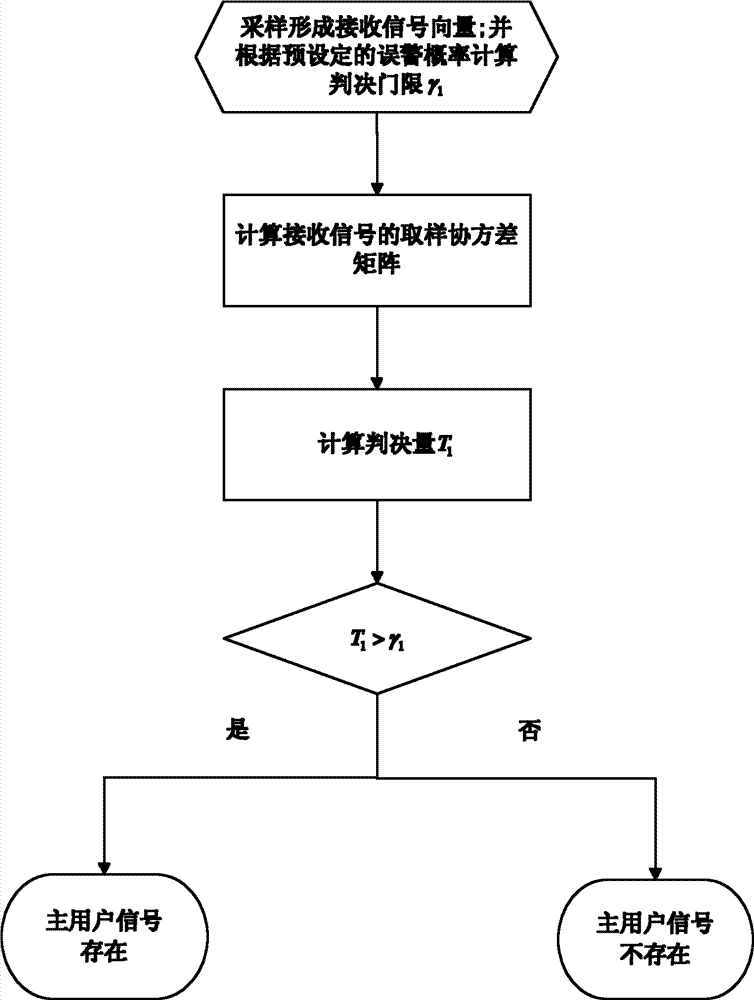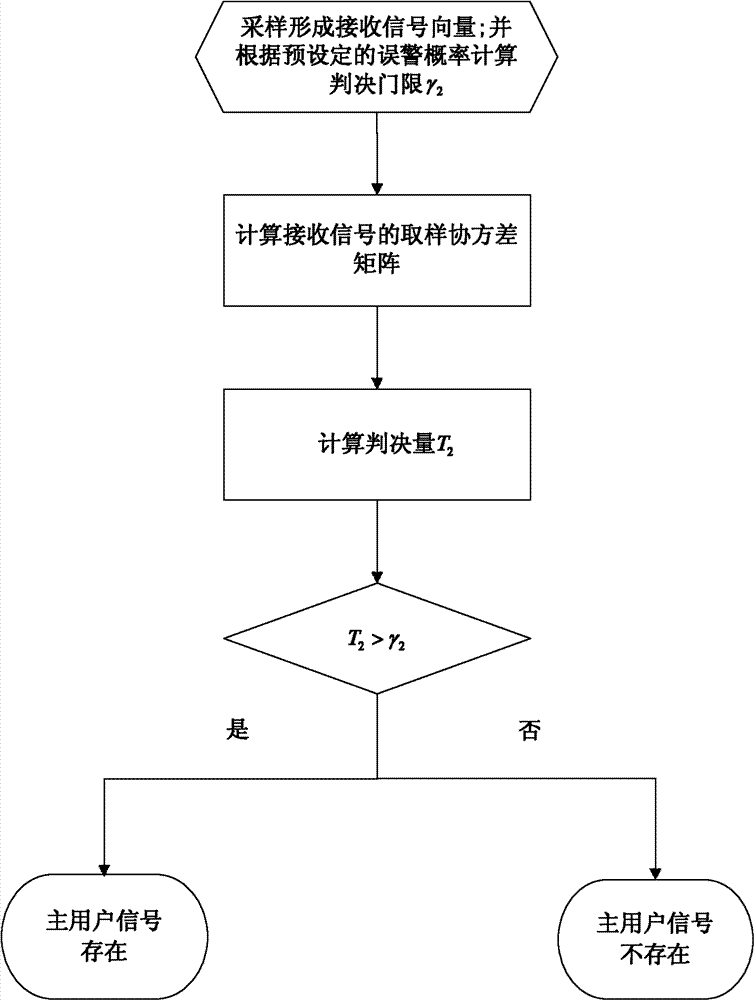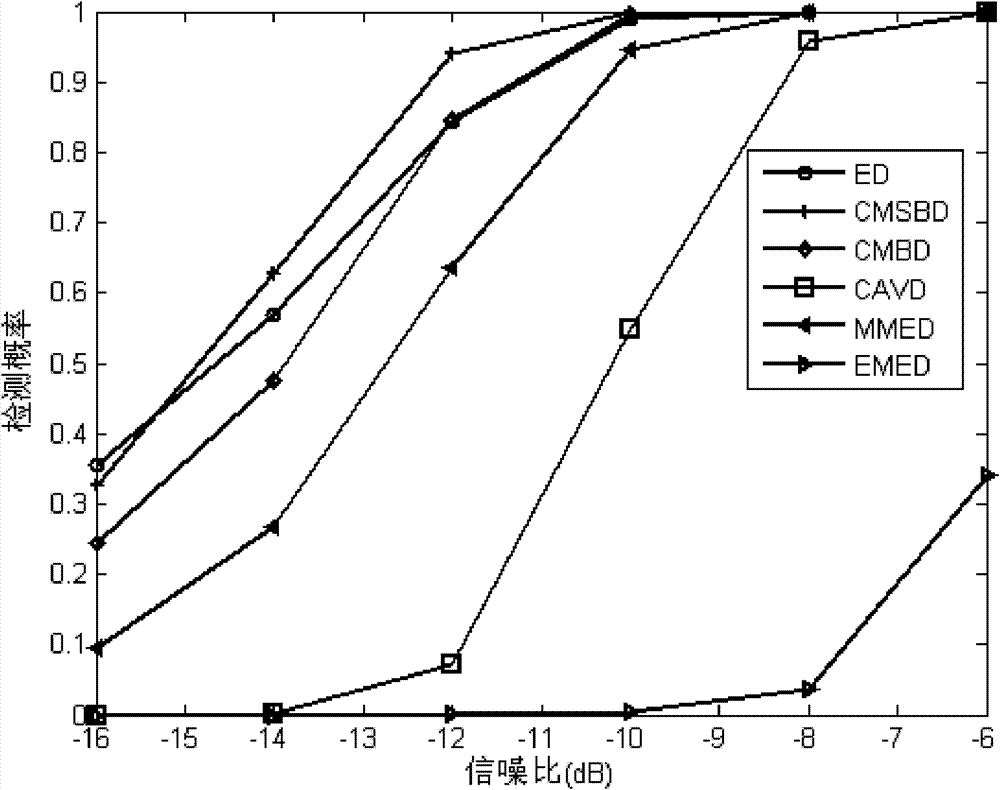Covariance matching-based multi-antenna spectrum sensing method
A spectrum sensing and covariance technology, which is applied in the field of multi-antenna spectrum sensing based on covariance matching, can solve problems such as performance degradation
- Summary
- Abstract
- Description
- Claims
- Application Information
AI Technical Summary
Problems solved by technology
Method used
Image
Examples
Embodiment Construction
[0044] The semi-blind detection method based on covariance matching judges whether the free spectrum exists by comparing the difference between the received signal sampling covariance matrix and the known noise covariance matrix. In the present invention, we reflect this difference through the trace operation of the matrix. The specific steps of its implementation are expressed as:
[0045] (1) Sampling the signals of M receiving antennas to form N receiving signal vectors: x i =[x i (1)x i (2)...x i (M)] T , i=1, . . . , N. Here the superscript T denotes the vector transpose operator.
[0046] (2) According to the preset false alarm probability P f Calculate the decision threshold:
[0047] γ 1 = 12 ( M + 1 ) χ χ r ...
PUM
 Login to View More
Login to View More Abstract
Description
Claims
Application Information
 Login to View More
Login to View More - R&D
- Intellectual Property
- Life Sciences
- Materials
- Tech Scout
- Unparalleled Data Quality
- Higher Quality Content
- 60% Fewer Hallucinations
Browse by: Latest US Patents, China's latest patents, Technical Efficacy Thesaurus, Application Domain, Technology Topic, Popular Technical Reports.
© 2025 PatSnap. All rights reserved.Legal|Privacy policy|Modern Slavery Act Transparency Statement|Sitemap|About US| Contact US: help@patsnap.com



